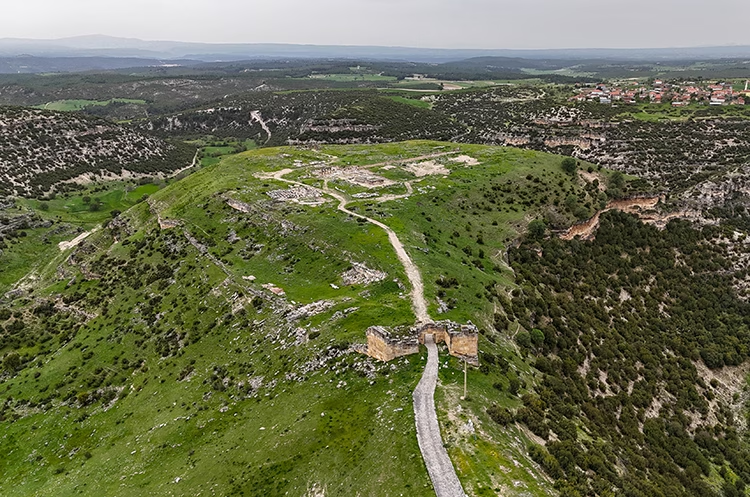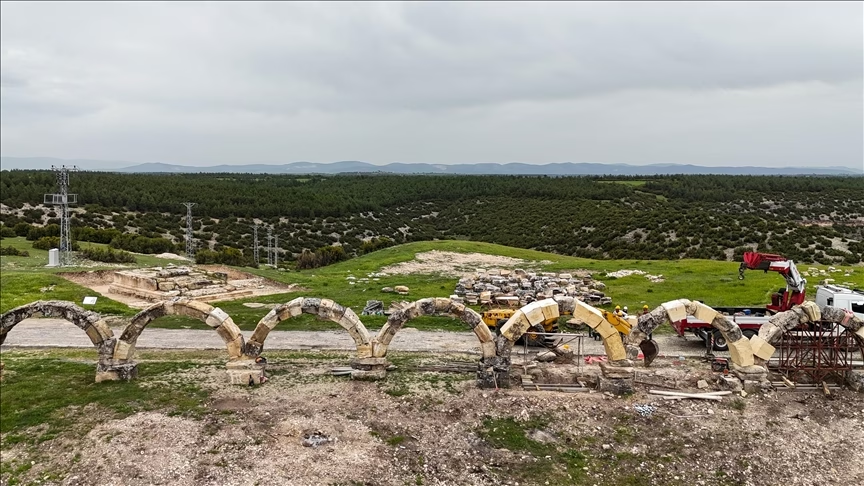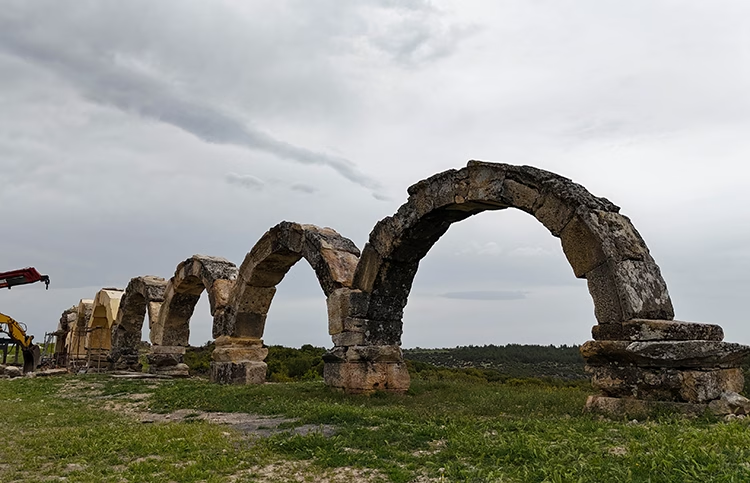Located in the mountainous region of western Turkey, the ancient city of Blaundos has recently seen a remarkable revival. Archaeologists and restoration experts have successfully restored eight aqueducts dating back over 2,100 years, shedding new light on the city’s rich historical and architectural heritage.
Blaundos was established during the Hellenistic period by Macedonian soldiers following Alexander the Great’s campaigns in Anatolia. Known as a “Garrison City,” Blaundos is perched on a naturally fortified site surrounded by deep valleys, granting it strategic dominance over the surrounding landscape.

The restored aqueducts, originally constructed during the Late Hellenistic to Early Roman periods, were part of an intricate water supply system vital to the city’s survival. Some of the aqueducts had suffered damage due to earthquakes and the passage of time. To address this, local cultural authorities initiated a comprehensive restoration project, meticulously recovering fallen stones, analyzing materials, and sourcing new stones from nearby quarries to ensure historical accuracy.
By the end of 2024, five of the aqueducts were restored, with the remaining three structures successfully completed this year. Restoration teams have preserved the aqueducts’ ancient appearance by applying aging and texturing techniques to the newly placed stones, maintaining the authenticity of the structures.

Beyond its impressive aqueducts, Blaundos is also home to a 2,000-year-old temple dedicated to Demeter, the goddess of agriculture and fertility, as well as unique stone formations that evoke comparisons to the famous Stonehenge in England. These cultural landmarks highlight Blaundos as a significant archaeological and historical site that continues to attract researchers and visitors alike.

The restoration of these aqueducts not only preserves the architectural ingenuity of ancient civilizations but also boosts the cultural tourism potential of the region, helping to connect modern audiences with Turkey’s rich and diverse heritage.
Cover Image Credit: Mehmet Çalık/AA





